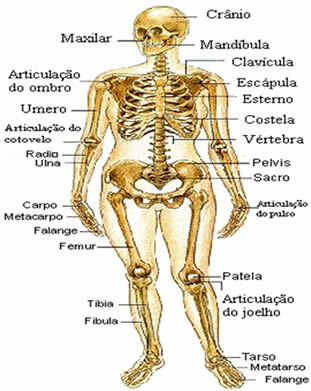cell cycle is the name given to the various changes that take place in a cell, from its appearance to its division into two daughter cells. THE interface and the mitosis constitute the main phases of the cell cycle.
Next, we will better understand how the cell cycle occurs by learning in detail about interphase and mitosis. In addition, let's see how the control of the cell cycle takes place and the importance of this regulation for the functioning of the organism.
Read too:Cell, the structural and functional unit of living beings
cell cycle phases
The cell cycle is formed by two phrases: interphase and mitosis. THE interface corresponds to most of the cycle, being a time of great activity metabolic and also cell growth. THE mitosis, in turn, is shorter and is when the cell divides into two daughter cells.

Interested in finding out more about this phase of the cell cycle? Read our text: Mitosis.
interface
Interphase is when the cell has intense activity, and mitosis is preceded and succeeded by it. The interface can be subdivided into
three phases: G1, S and G2, which are explained in detail below.G1 (first interval): occurs shortly after mitosis. During this period, the synthesis of RNA, proteins and cell organelles, being considered a stage of great activity. The cell regains its volume at this point, and a large increase in cell size is observed. It is also when the so-called restriction point is found, which prevents cells with damaged genetic material, for example, from continuing the cycle. The G1 phase is generally short in tissues that present great renewal; already in fabrics that do not renew, the cells leave G1 and enter a phase called G0.
S (synthesis phase): its main event is the duplication of DNA.
G2 (second interval): there is an accumulation of energy necessary to carry out cell division. In addition, the verification of the duplication of the chromosomes and of possible repaired DNA damage. It is also at this moment that tubulin, necessary for the formation of microtubules, is synthesized.
Do not stop now... There's more after the advertising ;)
Mitosis
It is a process of cell division in which the mother cell gives rise to two daughter cells, with the same number of chromosomes as the cell that originated them. This process can be divided, didactically, into five steps, which occur continuously. See, below, the steps of mitosis:
Prophase: the presence of the duplicated chromosomes is observed as two sister chromatids joined by the centromere. The formation of the mitotic spindle begins, formed by microtubules that depart from the centrosome and are responsible for guaranteeing the movement of chromosomes during mitosis. In this phase the nucleoli disappear.
Prometaphase: fragmentation of the nuclear membrane and greater condensation of chromosomes are observed. Microtubules attach to special regions of the chromosome called the kinetochore.
Metaphase: chromosomes are arranged in the equatorial plane of the cell. They migrate to this region thanks to the action of microtubules. At this stage the chromosomes reach the greatest degree of condensation.
Anaphase: the sister chromatids separate and migrate to each pole of the cell due to the shortening of the microtubules. During this stage, which is the shortest in all of mitosis, the elongation of the cell is observed. At the end, at each end, a complete collection of chromosomes will be found.
Telophase: the nuclear envelopes are reconstructed, giving rise to two nuclei. The nucleolus also reappears, and the chromosomes decondense. Spindle microtubules disappear.
During the last stages of mitosis, the so-called cytokinesis, which consists of the division of the cytoplasm. Cytokinesis, in animal and plant cells, occurs differently. in animal cells, there is the formation of a cleavage groove which divides the cell in two. in plant cells, however, the division of cytoplasm in two it occurs in a different way. In these, the blister formation that move to the center of the cell and form the cell plate, which grows outward until it reaches the cell walls and splits it in two.

If you are more curious about this phase of the cell cycle, go to: What is mitosis?
cell cycle control
Normal cells go through the cell cycle of regulated way, which ensures that the development of a particular living being is adequate. Some cells in our body, for example, divide throughout life, others, however, do not divide as often, and others do not divide during adulthood. Without proper regulation, the cycle would occur indiscriminately, which demonstrates the importance of a control system.
Know more:Is a tumor cancer? Top questions about cancer!
The cell cycle control system occurs by action of different molecules. in it there is checkpoints, in which signals allow the cell to stop or continue the cycle. Three main checkpoints are described:

G1 checkpoint or restriction point: being one of the most important, the continuity signal at this point ensures that the cell starts the cell cycle. If the cell does not receive the signal, it remains in G0.
Checkpoint G2/M:responsible for promoting the early events of mitosis.
third checkpoint: ensures that anaphase only starts when the chromosomes are connected to the spindle on the metaphase plate. When all chromosomes are aligned, a signal is emitted for anaphase to start.
An interesting fact is that the cancer cells they do not respond to the signals that regulate the cell cycle, so they continue to divide indeterminately. This abnormal behavior of cells can be extremely harmful to the body. As we know, many tumors are difficult to be treated and can lead to the individual's death.
By Vanessa Sardinha dos Santos
Biology teacher
Would you like to reference this text in a school or academic work? Look:
SANTOS, Vanessa Sardinha dos. "Cell cycle"; Brazil School. Available in: https://brasilescola.uol.com.br/biologia/ciclo-celular.htm. Accessed on June 28, 2021.


